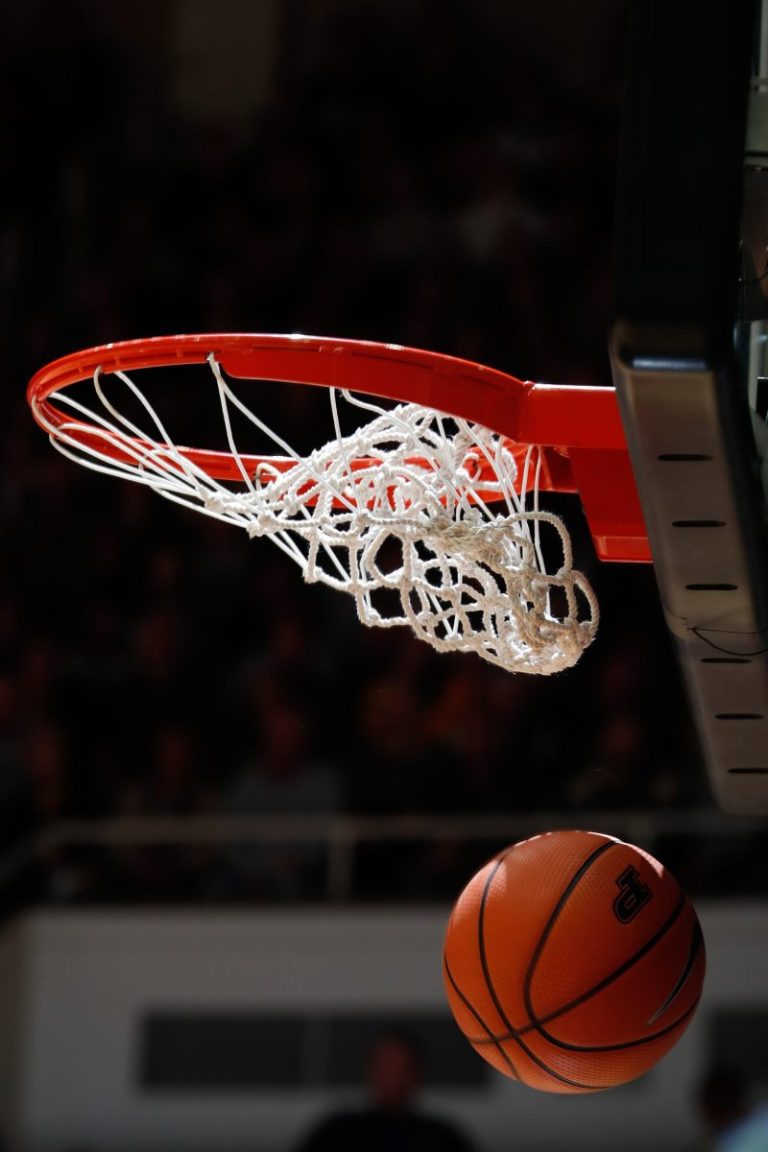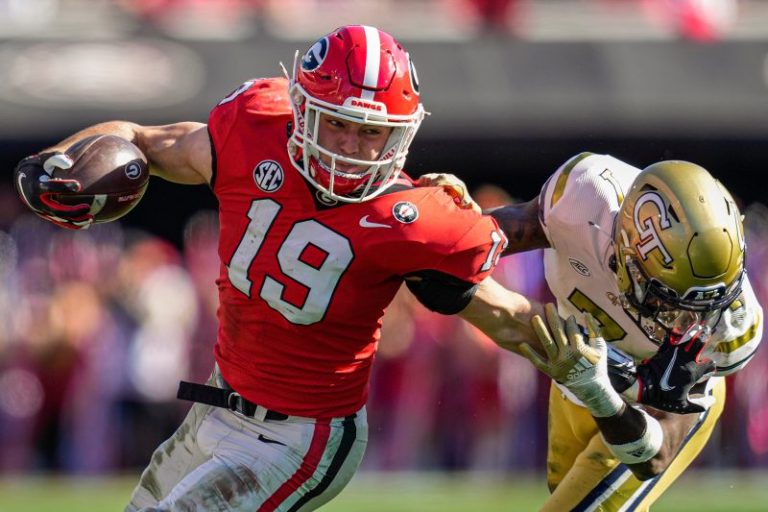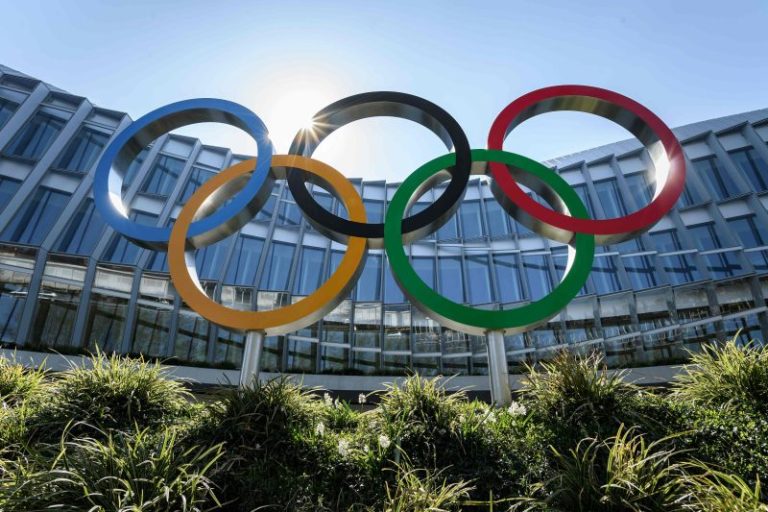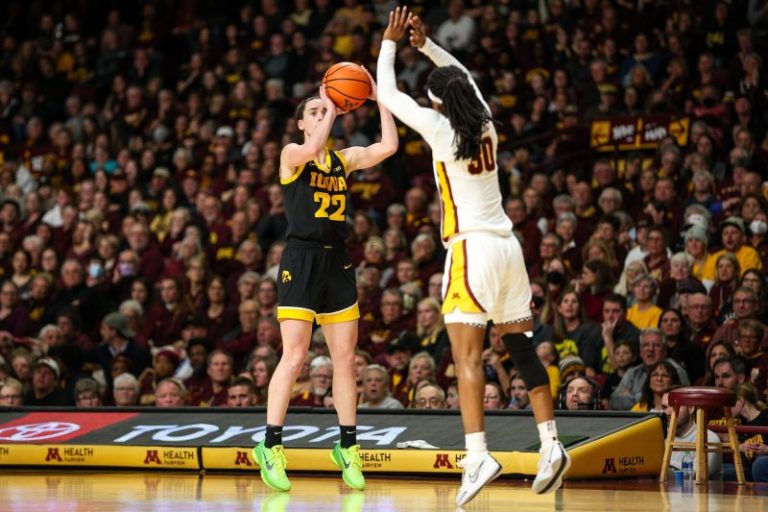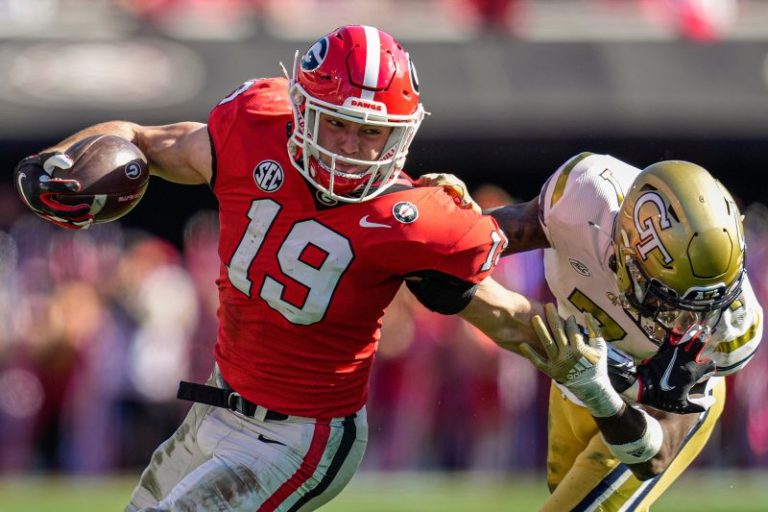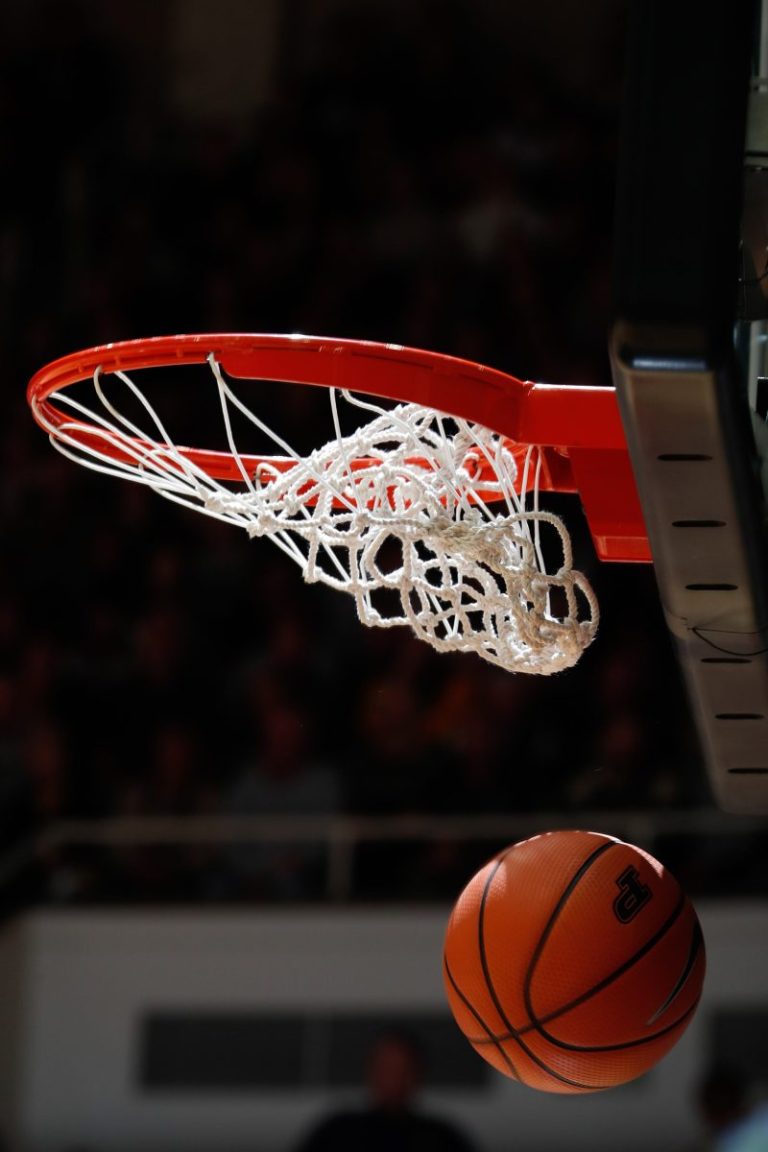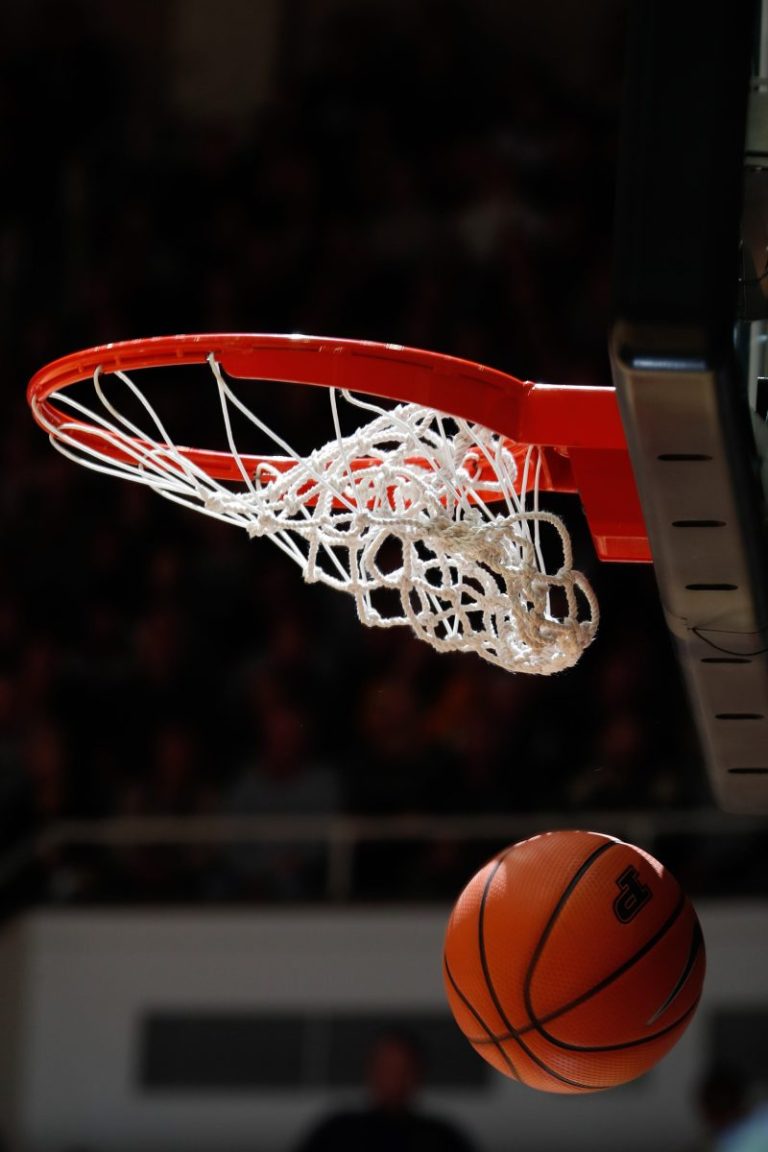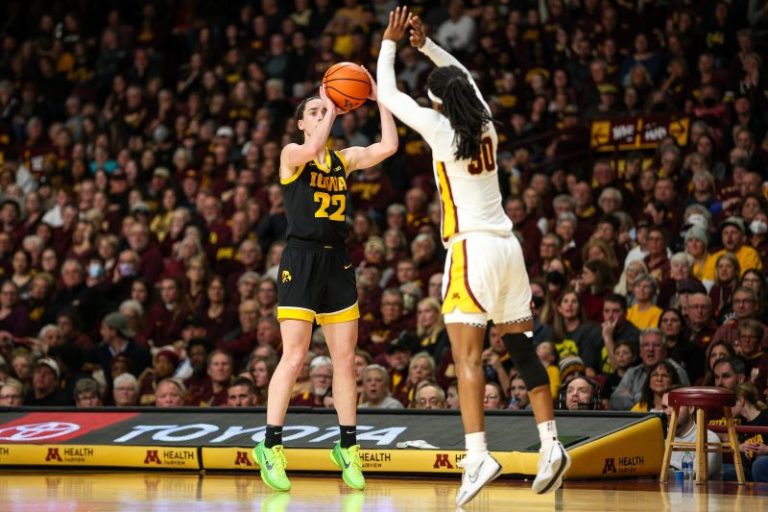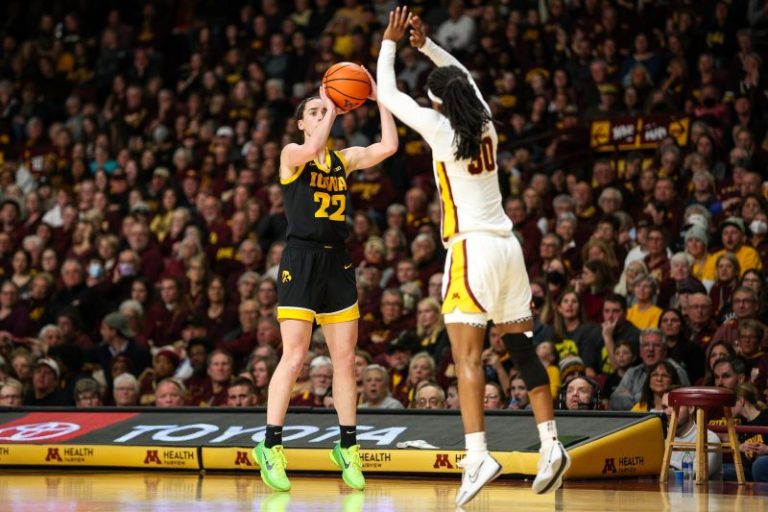INDIANAPOLIS – Brock Bowers is well positioned to make a living outrunning attention on the football field. However he was reminded Thursday morning at the NFL’s annual scouting combine that avoiding it during his professional evaluation journey is a wholly different challenge, and one that’s doubtless going to persist as the pre-draft hype builds over the next two months.
Facing a scrum of reporters packed a half-dozen rows deep at his podium, the type of audience generally reserved for top quarterback prospects, the former University of Georgia tight end fielded nearly 20 minutes’ worth of questions – no easy task for a guy who admittedly gets anxious while speaking in public.
“It’s not my favorite thing, but it’s part of it,” Bowers said. “I feel like I’ve gotten better at it since I started my freshman year at Georgia.”
He couldn’t have done much better with his primary responsibility for the Bulldogs.
The only player ever to win the John Mackey Award (given to the best tight end in college football) twice, the three-time All-SEC selection was probably the most dangerous offensive weapon for a UGA squad that won the national championship in 2021 and 2022. Bowers’ 2023 campaign was temporarily derailed by tightrope surgery for a high-ankle sprain suffered last October, but he still finished the season with 56 catches for 714 yards and six touchdowns.
NFL STATS CENTRAL: The latest NFL scores, schedules, odds, stats and more.
“We had to put a lot of emphasis on him, but not too much as a tight end – our defense looked at him more as a wide receiver,” former Kentucky cornerback Dru Phillips told USA TODAY Sports, the Wildcats burned for 100-yard games in two of three matchups against Bowers, who totaled three TDs against UK.
“You don’t expect a guy with that size to run the way he does.”
And that’s another part of the intrigue surrounding Bowers, the 6-4, 235-pounder regularly utilized in the ground game – even sprinting for a 75-yard touchdown against Kent State in 2022. Such production and versatility help explain why he’s routinely graded as one of the 2024 draft’s top prospects – and maybe the best who doesn’t play quarterback or wide receiver.
“I mean, when you watch him, he’s super easy to grade. He is one of the best ten players in the draft,” said NFL Network chief draft analyst Daniel Jeremiah. “Plays with just tenacity, especially with the ball in his hands. That’s where he is at his best.
“He can climb the ladder and go and get the ball, and really the run-after-catch stuff is what makes him special.”
Or, as former Georgia cornerback Kamari Lassiter succinctly said: “Brock’s one of a kind.”
Yet despite a unique combination of size, speed and mismatch issues he invites – Bowers opted not to showcase his skills Friday during the combine’s on-field workouts – the shy pass catcher is already stirring quite a bit of debate ahead of the draft. On one hand, he’s an unquestioned game breaker at a time when having a quality tight end seems to translate well to NFL team success – the Kansas City Chiefs (Travis Kelce), San Francisco 49ers (George Kittle), Baltimore Ravens (Mark Andrews) and Detroit Lions (Sam LaPorta) the final four squads in last season’s playoffs.
“Tight end is a prime position to be in right now. I’m just glad it’s now,” said Bowers, an avowed fan of Rob Gronkowski, but also a player sufficiently self-aware to know he doesn’t block like Gronk or Kittle despite other signature attributes.
“I feel like I’m yards after the catch and just being able to make people miss. Just turn good plays into great plays,” said Bowers.
“I like catching the ball in the flat and making things happen, that’s fun to me.”
On the other hand, Bowers is jockeying for draft position with Ohio State’s Marvin Harrison Jr., Washington’s Rome Odunze and LSU’s Malik Nabers – all elite wide receivers, a position the professional salary scale suggests is far more valued by NFL talent evaluators.
“You just have to take positional value into the equation, just because there’s been past examples of where we’ve seen tight ends not work out,” ESPN draft analyst Jordan Reed told USA TODAY Sports. “But I think the thing that makes Brock a little different is just the receiving ability – he’s a true wide receiver. He’s not like a George Kittle or T.J. Hockenson or anything like that.
“He’s taking jet sweeps, he’s taking reverses, and he’s taking them 60, 70 yards for touchdowns. That’s why I say he’s a tight end in a wide receiver’s body for the most part.”
To Reed’s point, it’s been three years since the Atlanta Falcons selected Kyle Pitts fourth overall – the highest a tight end has ever been drafted. They bypassed wideouts Ja’Marr Chase and Jaylen Waddle, among others. Two years earlier, tight ends Hockenson and Noah Fant were picked ahead of receivers Deebo Samuel, A.J. Brown and DK Metcalf. Oops.
So while several teams slotted in the top 10 this year need a pass catcher, recent history could work against Bowers given the likely wideout alternatives.
“(I) think when you look around the league, and you see most of these top tight ends that have come on Day 2 (of the draft) or even beyond that, teams are now saying, ‘OK, we can find that other tight end. Maybe we don’t get the top guy, but we can get a really, really good player who might end up being the top guy without having to pay that premium,” said Jeremiah.
“Kyle Pitts is as talented as any tight end that I have ever evaluated. You’re still dependent on the position of the quarterback. … That, coupled with the money difference – the savings you get by taking a premiere position in the top ten – it’s tough to place (Bowers) to know how high he is going to go.”
Bowers said Thursday his ankle is “100%” healed, and that he’d already met with approximately 15 clubs – effectively confirming widespread interest in him. He also served up a reminder that his discomfort with the limelight can be spun as a positive.
‘I feel like I’m kind of one of those no-issue dudes,’ he said. ‘I’m not going to cause any off-field issues. I’m just a competitor. I love to compete, and I just want to do it at the highest level.’
He’ll be doing that soon enough, almost surely with far fewer public-speaking obligations.
Possible 2024 NFL draft team fits for Georgia TE Brock Bowers
Los Angeles Chargers (5th overall pick): Once the free agency dust settles, QB Justin Herbert is likely to need more weapons given TE Gerald Everett is unsigned and WRs Keenan Allen and/or Mike Williams could be cap casualties. Bowers said Thursday he’d already talked to new Bolts coach Jim Harbaugh, who tried to recruit him to Michigan before Bowers scalded the Wolverines in the College Football Playoff two years ago.
Tennessee Titans (7th): A rebooting franchise could use another top-tier target for second-year QB Will Levis. Bowers reiterated Thursday how much he enjoys playing in the South while specifically citing Nashville as somewhere he’d like to live.
New York Jets (10th): QB Aaron Rodgers will doubtless be lobbying for pass-catching help, especially now that it seems former Green Bay Packers teammate Davante Adams won’t be leaving Las Vegas. Bowers would be one heckuva complement to third-year WR Garrett Wilson and said playing with Rodgers ‘would be pretty sweet.’
Las Vegas Raiders (13th): They took Notre Dame’s Michael Mayer in Round 2 last year. But at a time when teams tend to favor two-tight alignments, Bowers – who’s more comfortable in the slot – would beautifully supplement Mayer, who’s more likely to be deployed in-line where he can leverage his talents as a blocker.
Cincinnati Bengals (18th): While a bit hard to fathom Bowers dropping here, he has already met with the Bengals – and they currently don’t have a tight end under contract for 2024, nor veteran WR Tyler Boyd. And the notion of teaming Bowers with QB Joe Burrow, Chase and WR Tee Higgins could be enough to induce them to move up the board just enough to get him.
***
Follow USA TODAY Sports’ Nate Davis on X, formerly Twitter @ByNateDavis.
This post appeared first on USA TODAY


